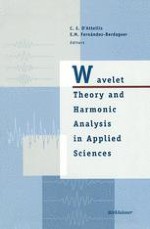1997 | OriginalPaper | Buchkapitel
Characterization of Epileptic EEG Time Series (II): Wavelet Transform and Information Theory
verfasst von : Carlos E. D’Attellis, Lucas G. Gamero, Susana I. Isaacson, Ricardo O. Sirne, María E. Torres
Erschienen in: Wavelet Theory and Harmonic Analysis in Applied Sciences
Verlag: Birkhäuser Boston
Enthalten in: Professional Book Archive
Aktivieren Sie unsere intelligente Suche, um passende Fachinhalte oder Patente zu finden.
Wählen Sie Textabschnitte aus um mit Künstlicher Intelligenz passenden Patente zu finden. powered by
Markieren Sie Textabschnitte, um KI-gestützt weitere passende Inhalte zu finden. powered by
Records of brain electrical activity from depth and scalp electrodes are used to localize the origin of seizure discharges in epileptic patients who are candidates for surgical removal of the seizure focus. In clinical practice, the epileptogenic loci is infered from visual analysis of the interictal and ictal discharges. Automated systems may be used to detect signal epochs that contain transients, patterns, and characteristic features of abnormal conditions. There are two basic areas of clinical application: 1) an automatic system for data reduction in long-term EEG; or 2) as a short-term detector of epileptic transients. Several techniques have been applied in order to solve the problem of computer assisted detection of epileptiform transients as previously mentioned by Blanco et al. in this book and others including template matching [11], parametric [1], mimetic [8] and syntactic [32] methods, neural networks [10], expert systems [12], phase-space topography [14], wavelet transforms [22, 23], and recently, polynomial spline and multiresolution frameworks [21].
